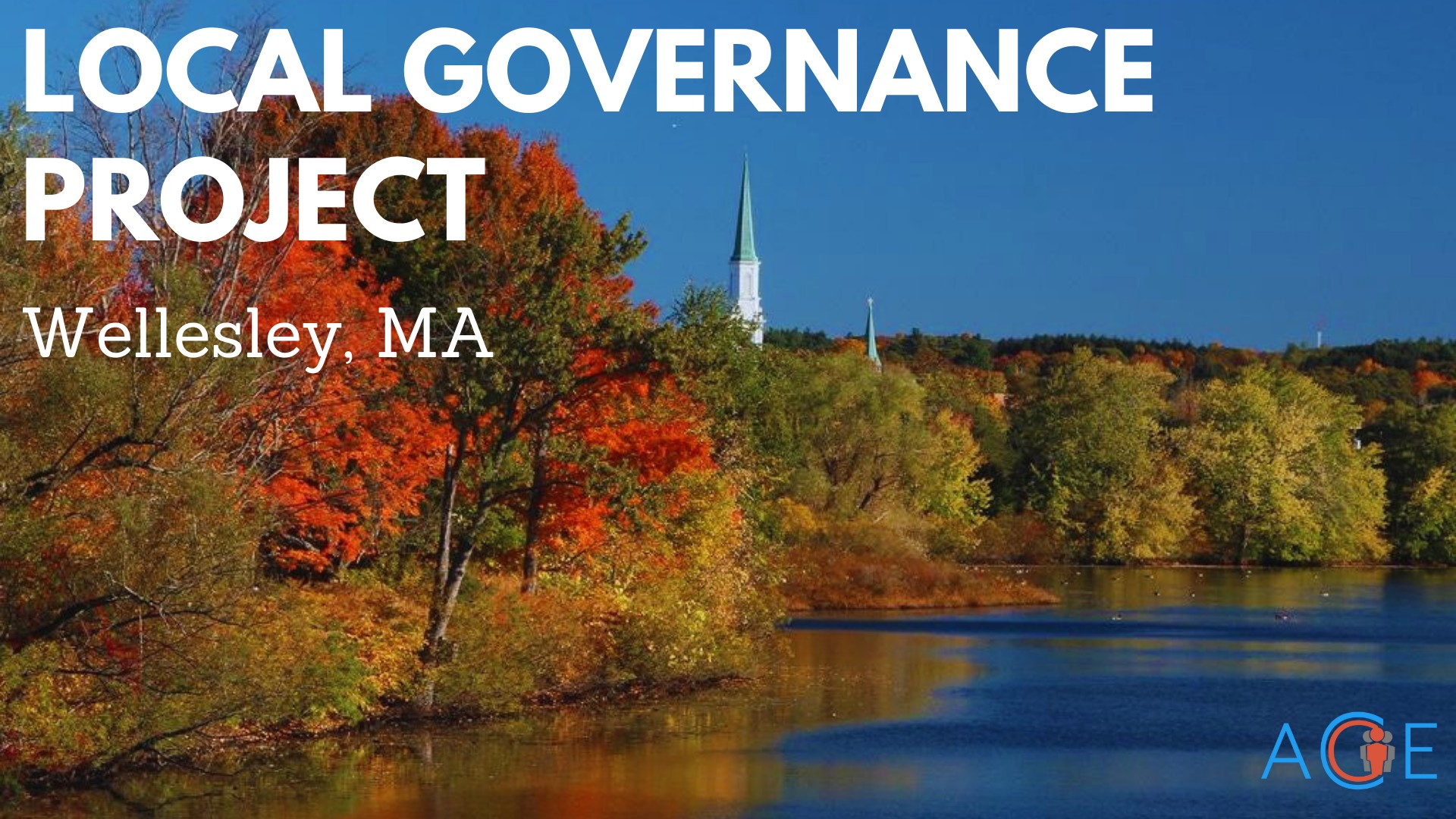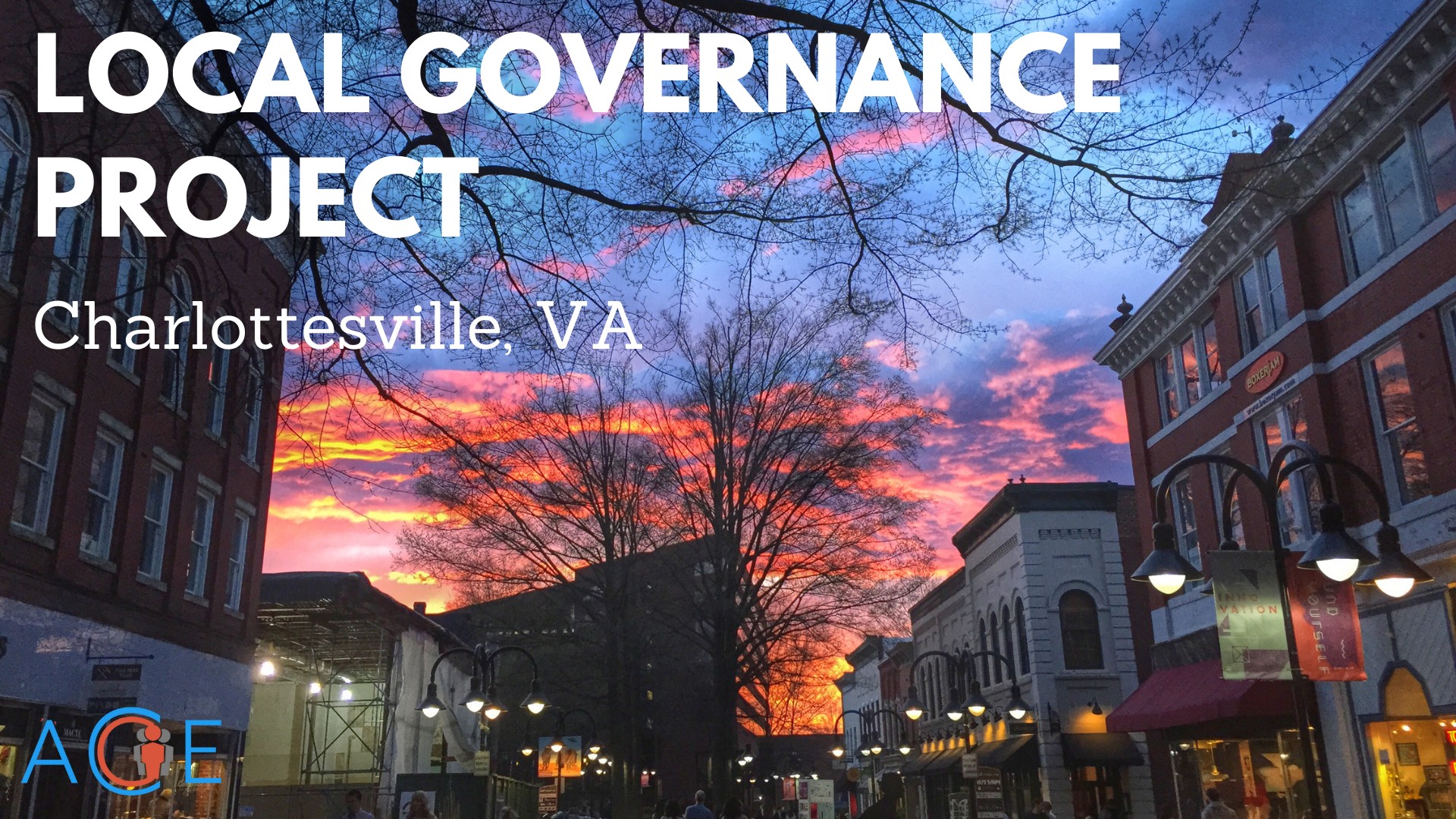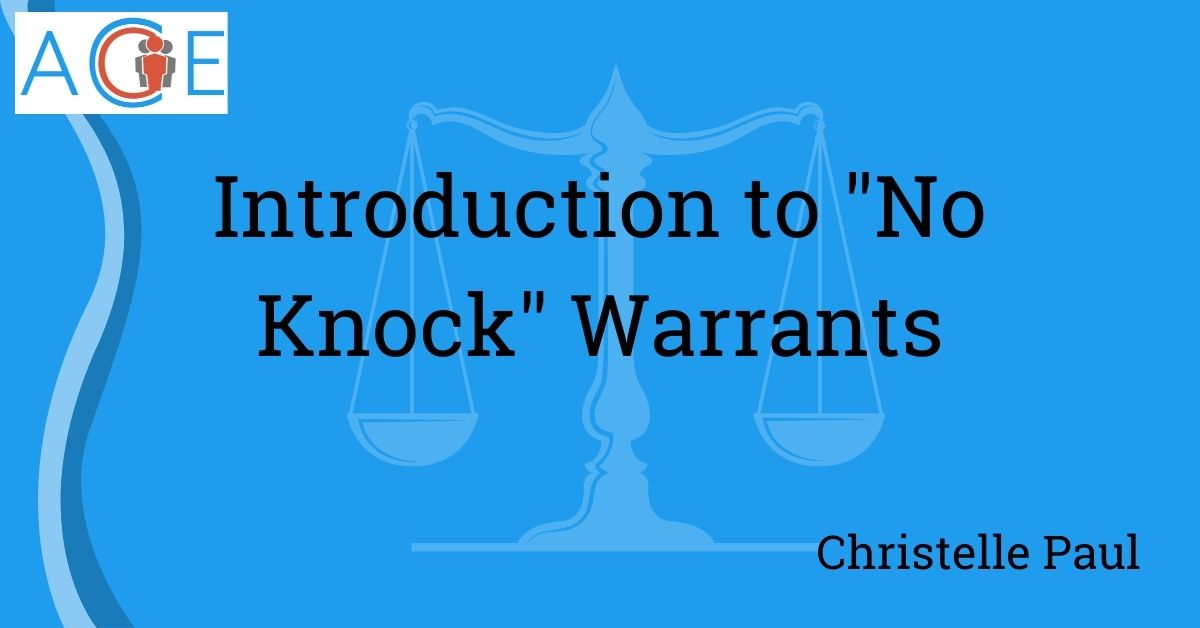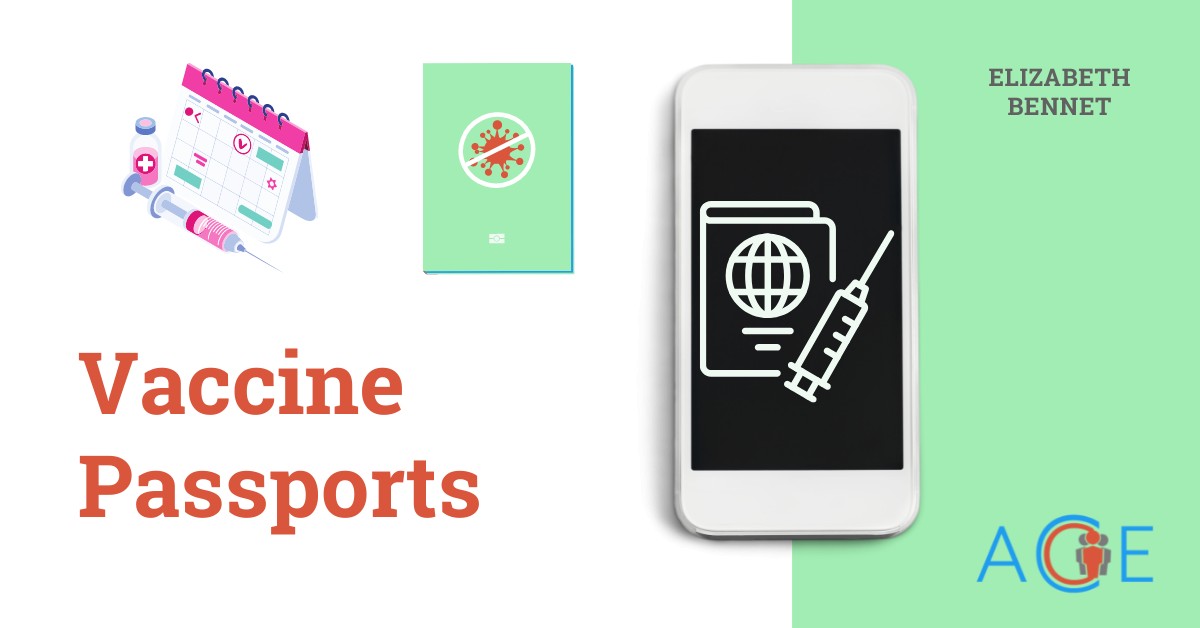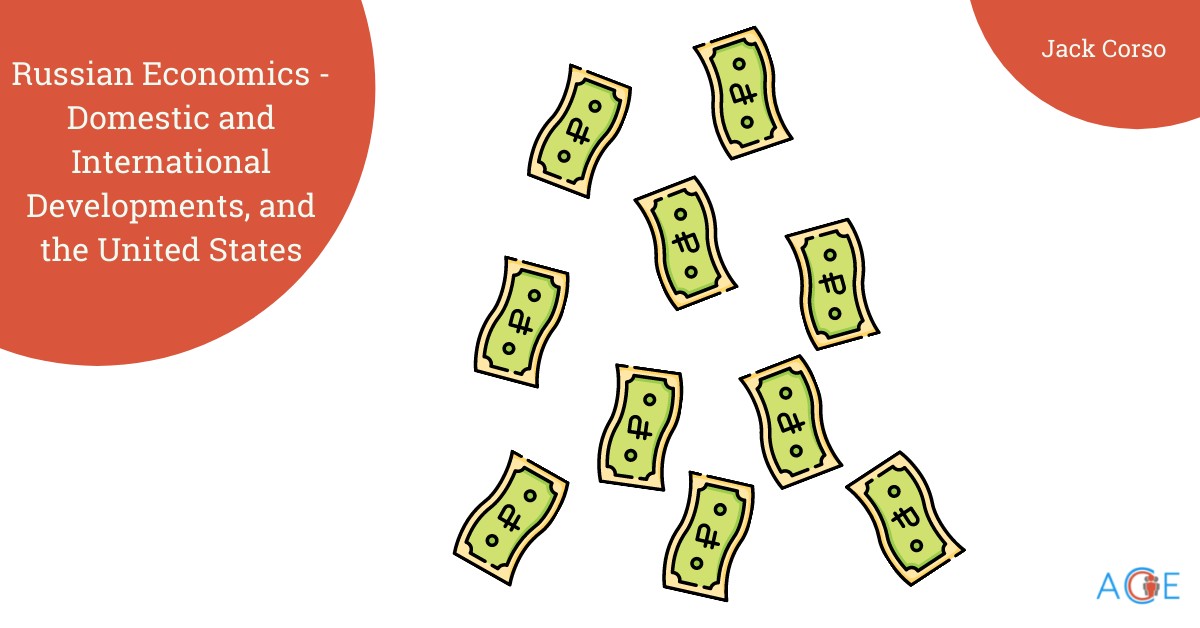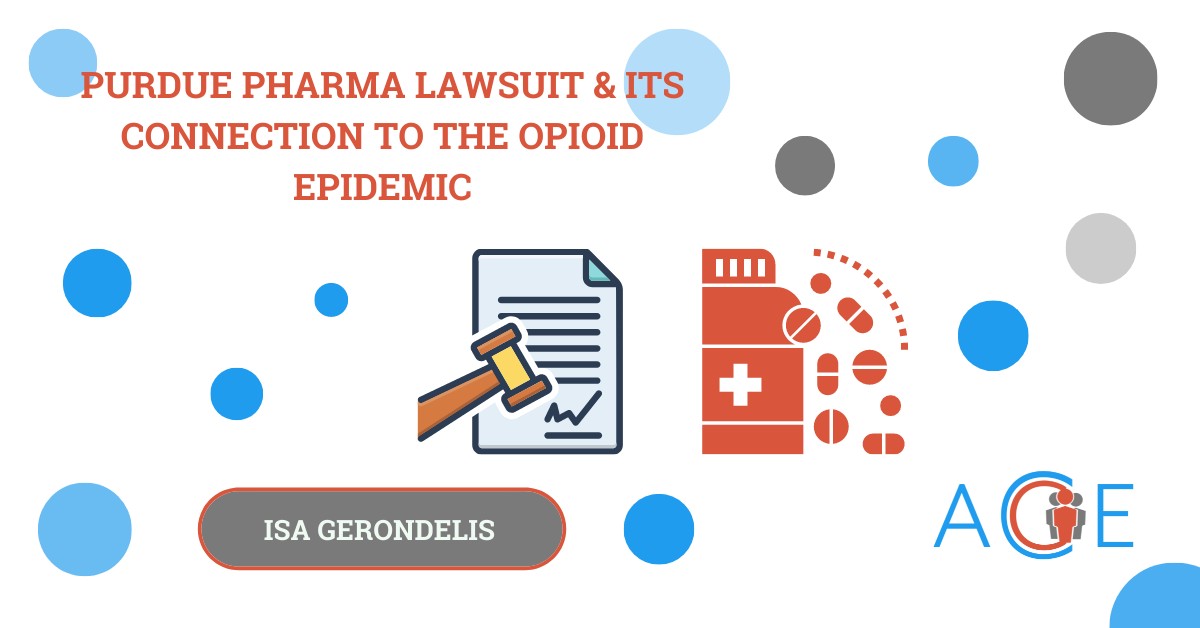Introduction to the Local Governance Project
The Local Governance Project speaks to one of the most important goals of ACE’s most important goals, engaging citizens in the democratic process. The main goal of the Local Governance Project is to identify the political priorities of a specific community and to use these findings to research and present potential policy solutions. To achieve this goal, the project is broken up into three sections. First, a community need must be identified. To complete this step, the Political Priorities Worksheet must be disseminated throughout the community in which the project will be taking place. The Political Priorities Worksheet allows us to identify the community’s priorities and select one that stands out the most for our focus. In the case of this project in Wellesley, Massachusetts, ‘Environmental Policy’ was by far the most common response when residents were asked what their political priorities were. The next stage of the project takes the results from the Political Priorities Worksheet and uses them to conduct further research on the main priority of the community. In addition to researching and presenting an overview of the issue that the community is focused on, potential local government policy solutions should be determined. The final component of the Local Governance Project is the dissemination of the results. The Local Governance Project allows citizens to become engaged with their local government by thinking through their individual political priorities, then becoming educated on the potential policy solutions for their priorities.
The Political Priorities Worksheet
The Political Priorities Worksheet consists of a series of questions geared at identifying the main priorities of the individual. These main issues are broken up into different groups: threshold, primary, and secondary.
- Threshold: Threshold issues are not the issues where voters want to see immediate policy change, but instead are issues where they want their elected representatives to align with them. These issues could be values-based, rather than having a direct influence on a voter’s day to day life. For example, many voters want to support candidates who believe in man-made climate change, even if environmental policy is not their first priority.
- Primary: Primary issues are the handful of issues where a voter wants to see immediate legislative activity. They are the issues which cause voters to protest, write letters, and closely follow policy developments. For example, during the 2020 presidential election, the Coronavirus pandemic and government response became the primary issue for many voters, whether they supported further lockdowns and a hardline approach or the lifting of restrictions on dining and other in-person activities.
- Secondary: Secondary issues are also issues where a voter wants to see concrete similar to primary issues in the sense that they are things you would like to engage with and see progress, but they are not as important as the primary issues. Many voters have a series of policy changes they would like to see, but they are not the main issues which drive them to the poles.
The Political Priorities Worksheet provides a comprehensive insight into the priorities of the individual, and is an effective tool in identifying what topics the Local Governance Project should focus on.
The Results of the Political Priorities Worksheet in Wellesley
The results from the Wellesley community provide interesting insight into the priorities of Wellesley residents, especially their primary issues. A large majority of Wellesley residents indicated that their primary issue of interest is Environmental Policy & Energy—this was the most popular response 58% of the time. The next most common response was Immigration, which was responsible for 31% of responses. The third most common response was Human Rights, which was responsible for 24% of responses. The rest of the top responses consisted of Public Health, Racial Equality, Democratic Reforms, and Criminal Justice, although none of these came close to the high number of responses that indicated Environmental Policy & Energy as the primary issue for Wellesley residents.
There was also conclusive data for the question of the secondary issues of Wellesley residents. The most common response, chosen 9 times, was Education. Following this, Economic Policy, Human Rights and Public Health were all chosen 5 times each. After that, the only issues with significant support were Democratic Reforms and Housing Policy. These results were interesting because while Education was not one of the major issues chosen for the primary issue section, it was significantly ahead of any other issue in the secondary issue section. The rest of the results of the secondary issue section were consistent with the primary issue section because Human Rights, Public Health and Democratic reforms all gained significant support in both sections. Overall, it can be summarized that the most popular primary issue for Wellesley residents is Environmental Policy & Energy, and the most common secondary issue for Wellesley residents is Education.
Results for the threshold issues were not as clear and conclusive. The most common threshold issue was Human Rights, which was chosen a total of 8 times. Constitutional rights was close behind, chosen a total of 7 times. Not far behind is Criminal Justice, which was chosen a total of 6 times. Following these top 3 threshold issues were Human Rights: Disability Rights, Human Rights: Indigenous Rights, Human Rights: Gender Equality, Human Rights: LGBTQ Equality. Thus, it can be concluded that Wellesley residents feel very strongly about a range of Human Rights issues, as well as constitutional rights and Criminal Justice. What is interesting about these results is that although Environmental Policy & Energy was by far the most common response for Primary Issues, it was not even in the top 15 most common threshold issues. This indicates that while many Wellesley residents want to see lots of change and progress in terms of Environmental Policy & Energy, they would still consider supporting a candidate who has a different perspective from them on this issue.
Environmental Policy Background
Due to the high number of Wellesley Residents who indicated that their primary issue is environmental policy, I decided to focus on environmental policy solutions for this paper. Environmental policy is defined as, “any action deliberately taken to manage human activities with a view to prevent, reduce, or mitigate harmful effects on nature and natural resources, and ensuring that man-made changes to the environment do not have harmful effects on humans or the environment.” The scope of the environmental issues that these policies aim to address are broad and could include air quality, water, pollution, waste management, etc. Usually, environmental policy focuses on problems that are caused by human activity and tries to address these problems through a series of policy changes. While governments can be influential in implementing such policies, non-government organizations can also have a huge impact. In the United States, environmental policy began as a non-partisan effort, and its start date is usually defined as the beginning of the Environmental Protection Agency in 1970. After this, a series of environmental policies were implemented, such as the Clean Air Act. The European Union also set up the Environmental Action Programme in 1973. Environmental policy is important because it can help combat the effects of the climate crisis. Further, environmental policy can help protect natural resources, and can even help regulate the economy.
Environmental Policies of Wellesley Town, Massachusetts, and the United States
There have been many successful environmental policy solutions implemented nationally, regionally, and locally. For example, Wellesley has established a Climate Action Committee (CAC) as part of its local government. The goal of the CAC is to develop and implement initiatives to reduce greenhouse gas emissions from Wellesley’s municipal, residential, commercial, industrial and institutional sectors. The CAC was established in 2010 in response to the town’s goal to reduce greenhouse gas emissions 10% below 2007 levels by 2013. This goal was achieved and was replaced by a goal to reduce greenhouse gas emissions 25% below 2007 levels by 2020. Following this goal, Wellesley has adopted additional greenhouse gas reduction goals for 2030, 2040 and 2050. They hope to achieve 50% below the 2007 baseline by 2030, 75% below by 2040, and eventually reach net-zero emissions by 2050. So far, the CAC has been successful in achieving its goals. To achieve these goals, CAC has implemented a series of initiatives and policies to address a broad range of issues in the Wellesley community. These initiatives include the Green Collaborative, which aims to bring together environmentally minded organizations four times a year. The Energy Reduction initiative includes programs such as ‘Shave the Peak”, which helps to reduce peak power demands on days with extreme weather conditions by reminding residents to use electricity during off-peak hours. Furthermore, the CAC has initiatives such as ‘Sustainable Mobility Plan”, the Transportation Working Group, and Waste Wise Wellesley. These initiatives and programs are examples of local environmental policy initiatives that have been implemented by the town of Wellesley’s CAC branch of the local government.
While there is value in the implementation of local policy solutions, the climate crisis knows no borders and often demands a broader scale solution. To effectively combat the effects of climate change, policies must be implemented on a regional, national, and even global scale, as well as through local governments. Massachusetts has implemented several initiatives and policies to combat climate change. These include the MA Decarbonization Roadmap, which aims to identify cost effective and equitable solutions to help Massachusetts achieve net zero emissions by 2050. Massachusetts has also led the Transportation and Climate Initiative (TCI), which is a regional collaboration that has been in place since 2010 and works with many areas of the northeast and mid-Atlantic to “improve transportation, develop the clean energy economy, and reduce emissions from transportation.” TCI is not the only initiative in which Massachusetts worked with other neighboring states. For example, all six New England states released a vision statement in October 2020 outlining their vision for a “clean, affordable, and reliable 21st century regional electric grid”. Further, Massachusetts is part of an even more broad scale coalition, the United States Climate Alliance, which is a “bipartisan coalition of 24 governors committed to reducing greenhouse gas emissions consistent with the goals of the Paris Agreement”. Lastly, Massachusetts is part of the Commission on the Future of Transportation, implemented a Comprehensive Energy Plan in 2018, and is a member of the Regional Greenhouse Gas Initiative. Massachusetts has joined a series of regional and even national initiatives to combat climate change, in addition to implementing initiatives in local and state government.
Lastly, we will discuss some of the national and global environmental policies that have been implemented in recent years. Nationally, environmental policy began with the Clean Air Act of 1970, which was followed by the Clean Cater Act in 1977 and the Comprehensive Environmental Response, Compensation and Liability Act (CERCLA) in 1980. Many laws and regulations were passed in the United States from the 1970s to the 1990s. There was a substantial break in the introduction of new environmental policies until 2013 when President Barack Obama “introduced a new climate change plan that will focus on cutting down carbon pollution, preparing for the impacts of climate change and providing international help”. Following this step, the climate alliance was formed, which was an alliance between 14 states across the United States that aimed at addressing climate change. Although there have been a series of major policy changes over the course of US history, there have not been substantial new laws passed in recent years to address climate change. The most substantial global environmental policy to date occurred at the Paris climate conference in 2015. During this conference, all the participating countries adopted the first ever universal agreement, that was legally binding, to work towards certain climate related goals. This conference was organized by the broader organization United Nations Framework Convention on Climate Change.
Introduction/Background on Water Pollution Issue
While the town of Wellesley and the state of Massachusetts have been working to combat some of the impacts of climate change through environmental policy, it is clear through the results of the Political Priorities Worksheet that Wellesley residents want to see more being done in terms of environmental policy. To speak to this desire, I investigated the most pressing needs of the Wellesley community to come to a hypothesis about what may be motivating the high numbers of people to choose environmental policy as their primary issue of priority. While there are many manifestations of climate change that impact the daily lives of Wellesley residents, one of the most pressing and difficult to ignore has been the water usage restrictions put in place by the Wellesley Department of Public Works (DPW) in June of 2021. The DPW issued a declaration that implemented many rules and restrictions for outdoor water usage. These restrictions include alternating outdoor watering schedules for houses and businesses, a watering ban from 9am to 5pm, and a general request to decrease outdoor watering time by about 20%. The DPW stated that these restrictions are necessary because the town is facing a water supply shortage after one of the towns water treatment plants was taken offline in May when testing showed levels of PFAS6 substances that were too high. The plant that was closed is located at Morses Pond, and supplied over 1 million gallons of water each day to the town’s homes and businesses before it was forced to close. Thus, the closing of this plant has caused a serious shortage in the town’s water supply system and the restrictions put in place by the DPW aim to avoid a total outdoor water ban in the future. PFAS6 are human made chemicals that are used to make non-stick, stain resistant and water resistant products. The contamination of the Morses pond water plant by PFAS6 and the resulting water usage restrictions illustrate a situation in which environmental policy can be used to combat the impacts of human activity on the climate.
Problem Statement
PFAS6 is a new drinking water standard that tests for six different PFAS compounds. The Morses pond plant was the only plant in Wellesley town that had levels of PFAS6 that were higher than the allowed amount. PFAS are manmade chemicals that are stable and are capable of repelling both water and oil. Different PFAS have different lengths and properties which can alter how toxic these chemicals are, making some forms of PFAS more toxic than others. The most common forms of PFAS are perfluorooctanoic acid (PFOA) and perfluorooctanesulfonic acid (PFOS) which have also been studied the most thoroughly. PFAS do not breakdown easily in the environment and they are water soluble which means that while there are low levels of PFAS in many areas of the environment there can be higher levels in water supplies that are near places that manufacture, dispose of or use PFAS. Other than their use in oil and water resistant products, PFAS are often also used by the military and firefighters, and people can be exposed through water contamination, food, through normal use and through manufacturing. Water contamination of PFAS usually occurs near a facility where PFAS are used or produced or locations where PFAS are used for firefighting.
There are many risks associated with exposure to PFAS, and human exposure is widespread. The majority of people in the United States and other industrialized nations have measurable amounts of PFAS in their blood. PFAS can accumulate in the body over long periods of exposure and can reach a level in the body that will have adverse health effects. That being said, scientists are still learning about the risks of PFAS in the body. Some of the longer chains of PFAS, such as PFOA and PFOS, which have been phased out of production in the United States since 2013 and 2002, respectively, can lead to developmental effects in infants, decrease chance of pregnancy, increase blood pressure during pregnancy, lower infant birth weights, interfere with hormones, increase cholesterol levels, impact the immune system and increase the risk of cancer. Once one understands the risks associated with PFAS contamination, it is clear why Wellesley town decided to close the water treatment plant that was contaminated. The pollution of this water treatment plant by man-made chemicals has created a situation in which environmental policy must be implemented to combat the impacts of this human activity on the climate.
Objective
The purpose of this research paper is to identify the cause of the water shortage in Wellesley and then to inform the public about why this problem is occurring and what the potential solutions could be. Now that the causes and risks of PFAS contamination in the Morses Pond water plant have been explained, potential policy solutions can be explored. The first potential policy solution is the expansion of the current state-wide testing program. This would include expanding free testing access to 100% of private water supplies. The second potential policy solution would be to lower the combined standard to 2ppt for PFOA, PFOS, PFNA and PFHxs and 5ppt for GenX. This would allow a lower level of PFAS contamination than what is currently allowed.
Policy Options
Expanding Testing: The first policy option that should be explored – expanding the Massachusetts state testing program to test 100% of private water supplies. Currently, MassDEP (Massachusetts Department of Environmental Protection) is conducting PFAS testing for a limited number of private wells as they are only focusing on the towns where 60% or more of local residents are served by private wells. MassDEP has chosen 84 towns in Massachusetts to focus on, but they are not providing free testing for all of the private wells in these 84 towns, despite the fact that the majority of the residents of these towns use private wells to access water. Instead, MassDEP is choosing only 40 wells to be selected and tested. They will choose these wells based on “geographic distribution throughout the town, proximity to potential sources of PFAS, and available funding.” This decision by MassDEP leaves many private water wells un-tested, and thus leaves residents ignorant to the contaminants in their water supplies. A policy option to fix this problem of PFAS contamination and insufficient testing would be to implement statewide free testing in all private water wells in all towns to ensure that 100% of residents’ water supplies have been tested for PFAS contamination.
Lowering Ceiling on Contaminants: The second policy option that should be explored is lowering the levels of PFAS that are deemed safe in the state of Massachusetts. Currently, Massachusetts allows a combined standard of 20ppt for 6PFAS while the US EPA allows up to 70ppt for 2PFAS. While Massachusetts has already lowered the acceptable combined standard concentration when compared to the EPA, organizations such as the Natural Resources Defense Council (NRDC) suggest that the standard should be lowered even more to establish a combined standard of 2 ppt for PFOA, PFOS, PFNA, and PFHxS and 5ppt for GenX. This option would provide a more detailed insight into the levels of PFAS in the state’s drinking water and allow us to ensure that the levels of PFAS present are not so high that they are harmful to the human body.
Analysis of Options
To pass either policy requires cooperation with the Massachusetts Department of Environmental Protection (MassDEP). MassDEP is responsible for initiating the process to develop a new standard for the maximum contaminant level, and to initiate a new statewide testing program. To begin this process, the MassDEP will announce their intention to develop a new standard or testing process. The MassDEP will then propose the revisions in the Massachusetts Register which begins the formal public comment process. Following this, MassDEP will host a public hearing as well as a public meeting to discuss the proposed regulations. The final step of the process includes a series of revisions and public comments which will continue until a final regulation is made.
This process includes public commentary and discussion about the proposed changes within the community. Thus, these policies will be more successfully passed if the community is aware of the benefits of the policies and how they will positively impact their lives. Both suggested policies will be effective at lowering the levels of PFAS that Wellesley town, and the surrounding towns in the state of Massachusetts, will be consuming unknowingly through public and private water supplies. It is important to reduce the levels of PFAS contamination in public and private water supplies because there are severe health risks that can come from high levels of PFAS consumption. These health risks will be damaging to the lives of Wellesley community members. Further, these policies will save the community money through the reduction of healthcare costs over time. The health risks associated with PFAS contamination are significant and a major reason why these policies may be popular for the public. Further, there are more logistical and practical reasons why the Wellesley community may benefit from these policy changes. These policies would help to avoid water usage regulations similar to what the Wellesley community is experiencing currently. Through the implementation of more routine and preventative testing, there will be less of a need to close water treatment plants last minute. The closing of plants causes a great deal of strain on the Wellesley communities water supply. Increased testing would help to prevent water usage restrictions, which inconvenience the Wellesley community, and cost money to inform the public about.
While there are many benefits to the implementation of these policies, there are also some potential reasons why the public would be against these policies. First, the implementation of more routine testing will cost money for the state of Massachusetts and the town of Wellesley, especially to provide free testing to all public and private water supplies. To cover these costs, state and town taxes may change or increase, or funding could be taken from other places to implement these policies. Second, the lowering of the maximum contaminant level would mean that more PFAS contamination would be discovered. While this is a good thing in terms of protecting the health of Wellesley residents, it could also mean more frequent closing of water treatment plants. It is likely that many of the water treatment plants in Wellesley and the broader state of Massachusetts have levels of PFAS that would be too high if the suggested maximum contaminant level was implemented. This could be inconvenient for the public because there would be more frequent closings of plants.
Policy Recommendation
In order to address the water pollution issue, the options are to expand state sponsored testing to cover 100% of private water supplies, and a combined standard of 2 ppt for PFOA, PFOS, PFNA, and PFHxS and 5ppt for GenX. These policy changes would support the overall health and safety of the Wellesley community, as well as ensure that the community is informed and aware of the contaminants in the public and private water supply. These policies would ensure that the water supplies in Wellesley town are safely monitored and do not contain levels of PFAS that could be harmful to the Wellesley community. These policies would save money long term by decreasing related health risks, as well as by preventing an unexpected closure of a water treatment plant which would lead to restrictions and disrupt the lives of the Wellesley community. For these reasons, I recommend that these policies be implemented as soon as possible to protect the health and safety of the Wellesley community as well as of the state of Massachusetts overall.
Conclusion
The Local Governance Project has allowed me to discover the priorities of the Wellesley community and use the information to research and brainstorm potential policy solutions that would speak to the priorities of Wellesley residents. The results of the Political Priorities Worksheet indicated that Wellesley residents were most passionate about environmental policy and energy as their main political priority. Once this was observed, I was able to focus on one specific environmental issue that could be impacted by the implementation of a new environmental policy. The most pressing environmental issue facing Wellesley residents was determined to be water usage restrictions because of PFAS contamination. From this information I was able to identify, analyze and then recommend two potential policy solutions to solve PFAS contamination. In conclusion, the local governance project provided valuable insight into the Wellesley communities environmental needs and potential policy pathways to improve the lives of Wellesley residents through the implementation of environmental policies.
